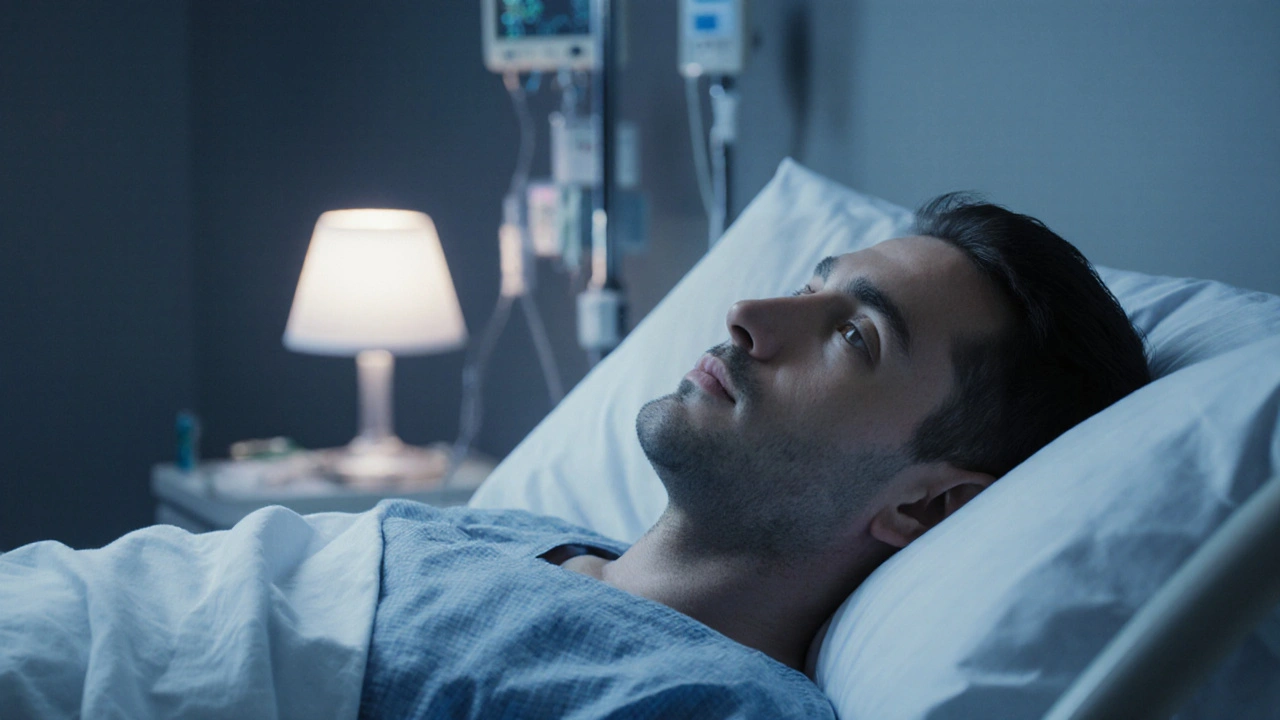
Health October 8, 2025
Effective Strategies to Manage Post‑Operative Insomnia During Anesthesia Recovery
Post-Operative Insomnia Management Guide
Identify Your Triggers
Select the factors that apply to your situation:
Your Current Sleep Status
Recommended Strategies
Sleep Hygiene
Create optimal conditions for restful sleep.
Relaxation Breathing
Use controlled breathing to calm the nervous system.
Light Therapy
Reset your circadian rhythm with strategic light exposure.
Melatonin
Natural hormone to regulate sleep-wake cycles.
CBT-I
Behavioral therapy for insomnia.
Medical Support
When to seek professional help for persistent insomnia.
Your Personalized Recommendations
Select your triggers and adjust the sliders to see personalized recommendations.
Waking up after surgery and staring at the ceiling for hours? post-operative insomnia is a surprisingly common hurdle that can slow healing, boost pain, and leave you feeling drained. The good news is that a mix of simple habits, targeted medicines, and timing tricks can turn those restless nights into restorative sleep, even while you’re still under the effects of anesthesia.
Quick Takeaways
- Identify the main triggers: pain, medication side‑effects, and disrupted circadian rhythm.
- Start with non‑pharmacological moves-sleep‑friendly environment, light exposure, and relaxation breathing.
- Consider evidence‑backed supplements like melatonin (3mg, 30minutes before bedtime) for short‑term use.
- Use low‑dose hypnotics or short‑acting opioids only when pain is high and other methods fail.
- Monitor sleep patterns for at least three nights; contact your surgical team if insomnia lasts beyond a week.
Why Insomnia Happens After Surgery
During Anesthesia recovery is the phase when the body clears anesthetic agents and regains normal consciousness, several physiological and psychological factors collide:
- Pain spikes: Tissue trauma sends nociceptive signals that keep the brain alert.
- Medication side‑effects: Opioids, antihistamines, and some antibiotics can disturb REM sleep.
- Circadian disruption: Operating rooms run on artificial lighting; postoperative rooms often lack natural light, confusing the body’s internal clock.
- Stress and anxiety: Worries about recovery outcomes fuel cortisol release, a known sleep suppressant.
Understanding these triggers helps you match each one with a precise countermeasure.
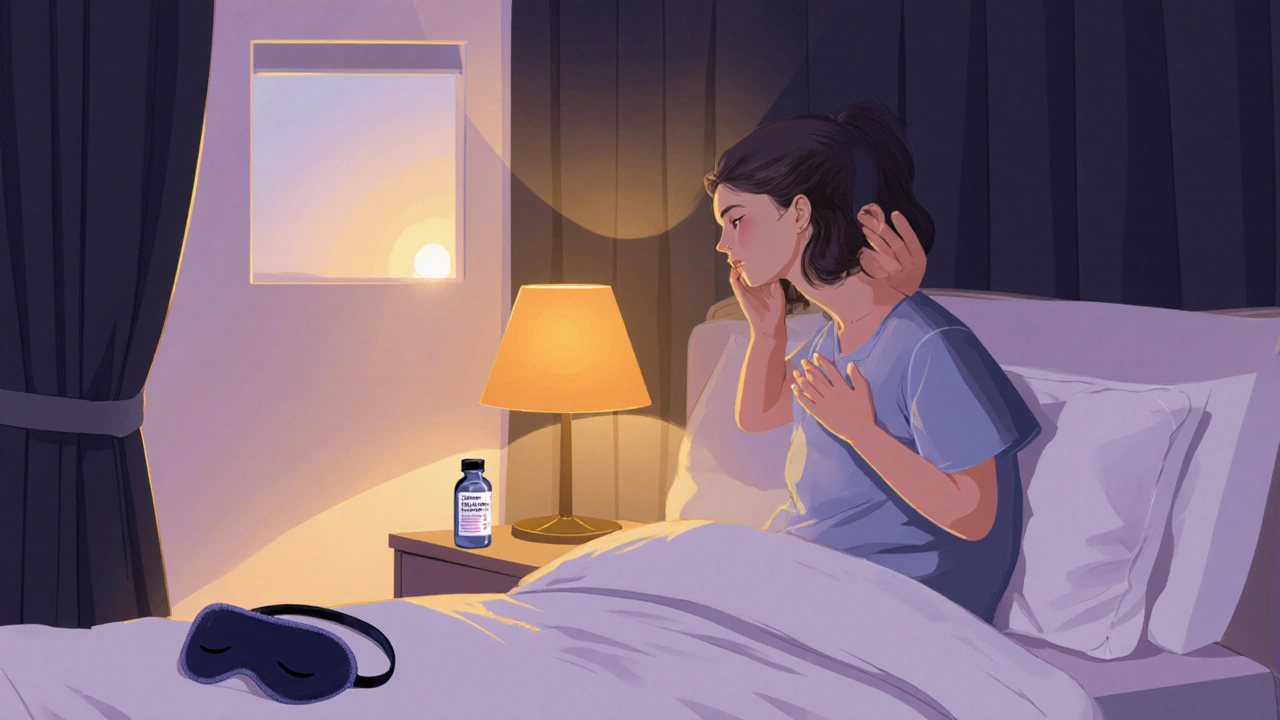
Non‑Pharmacological Strategies
Before reaching for a pill, try these low‑risk tactics that address the root causes listed above.
- Sleep hygiene is a set of habits that promote consistent, high‑quality sleep. Keep the room cool (18‑20°C), use blackout curtains, and limit screens at least an hour before bedtime.
- Relaxation breathing is a technique that lowers heart rate and reduces anxiety. Try the 4‑7‑8 method: inhale 4seconds, hold 7, exhale 8.
- Light therapy is the strategic exposure to bright light to reset circadian rhythms. Get 20minutes of natural sunlight in the morning; avoid bright lights after 6pm.
- Progressive muscle relaxation is a step‑by‑step tension‑release routine that eases physical stress. Starting from the toes, tense each muscle group for 5seconds, then release.
These methods can be combined; a typical bedtime routine might be: dim lights → 5minutes of breathing → 10minutes of gentle stretching → sleep‑friendly environment.
Pharmacological Options
When non‑drug measures aren’t enough, a short, targeted medication plan can bridge the gap.
- Melatonin is a naturally occurring hormone that regulates sleep‑wake cycles. A 3mg dose taken 30minutes before bed has been shown in a 2023 meta‑analysis to reduce sleep onset latency by 12minutes in post‑surgical patients.
- Cognitive Behavioral Therapy for Insomnia (CBT‑I) is a structured program that modifies thoughts and behaviors around sleep. Even a single tele‑session within the first 48hours can lower insomnia severity scores by 30%.
- Short‑acting opioids are pain relievers with a rapid onset and quick clearance, such as oxycodone IR 5mg. Use only when pain scores exceed 6/10 and combine with a non‑opioid adjunct.
- Benzodiazepines are sedative‑hypnotics that act on GABA receptors, e.g., lorazepam 0.5mg. Reserve for patients with severe anxiety and limit to <48hours to avoid dependence.
Always discuss dosages with your anesthesiologist or surgeon, especially because some drugs interact with residual anesthesia agents.
Building a Personalized Recovery Plan
Every surgical journey is unique, so a one‑size‑fits‑all sleep script won’t cut it. Follow this three‑step template:
- Assess: Record pain levels, medication schedule, and nightly sleep quality for three days using a simple chart.
- Intervene: Apply the most relevant non‑pharmacological tactics first. Add melatonin or CBT‑I if the sleep chart shows >30minutes of wakefulness after sleep onset.
- Review: On day4, compare the chart to baseline. If insomnia persists or pain remains >5/10, ask the healthcare team to adjust analgesics or consider a short hypnotic course.
This loop creates a feedback‑driven plan that respects both healing needs and sleep health.

When to Seek Professional Help
If any of the following occur, it’s time to call your surgeon, anesthetist, or a sleep specialist:
- Insomnia lasts more than 7days post‑surgery.
- Sleep deprivation leads to confusion, hallucinations, or severe mood swings.
- Pain remains high despite medication adjustments.
- New symptoms appear, such as shortness of breath or fever, which could signal complications.
Early intervention prevents chronic sleep problems and speeds up overall recovery.
Comparison of Strategies
| Factor | Non‑Pharmacological | Pharmacological |
|---|---|---|
| Onset of benefit | 30‑60minutes after routine (e.g., breathing, light exposure) | 5‑20minutes after ingestion (melatonin, hypnotics) |
| Risk of side‑effects | Minimal; occasional daytime drowsiness if environment isn’t dark | Potential constipation, respiratory depression, dependence |
| Impact on wound healing | Positive - better sleep boosts immune response | Mixed - opioids may suppress immunity, benzodiazepines can blunt stress response |
| Ease of implementation | Requires discipline and a quiet room | Needs prescription and monitoring |
| Typical duration | Indefinite - habits can become lifelong | Usually 2‑7days for short‑term insomnia |
Frequently Asked Questions
How long does post‑operative insomnia usually last?
Most patients see improvement within 3‑5days when they combine pain control with good sleep hygiene. If insomnia persists beyond a week, it’s a sign to involve a clinician.
Can melatonin interfere with anesthesia?
Melatonin does not directly interact with common anesthetic agents. Studies from 2022‑2024 show it is safe when taken at low doses (1‑5mg) after surgery, but always confirm with your anesthesiologist.
Is it safe to use a short‑acting opioid for pain and still sleep?
Short‑acting opioids can mask pain enough to aid sleep, but they may also blunt respiratory drive, especially in older adults. Combine them with non‑opioid analgesics (acetaminophen or NSAIDs) and monitor oxygen saturation.
What role does CBT‑I play right after surgery?
CBT‑I restructures thoughts that keep the mind racing at night. A single remote session within 48hours can teach stimulus control (using the bed only for sleep) and reduce insomnia severity scores by about one‑third.
Should I avoid caffeine completely during recovery?
Limit caffeine to before noon. Even a small afternoon coffee can delay melatonin release, extending sleep latency during a vulnerable recovery window.
Write a comment
Items marked with * are required.

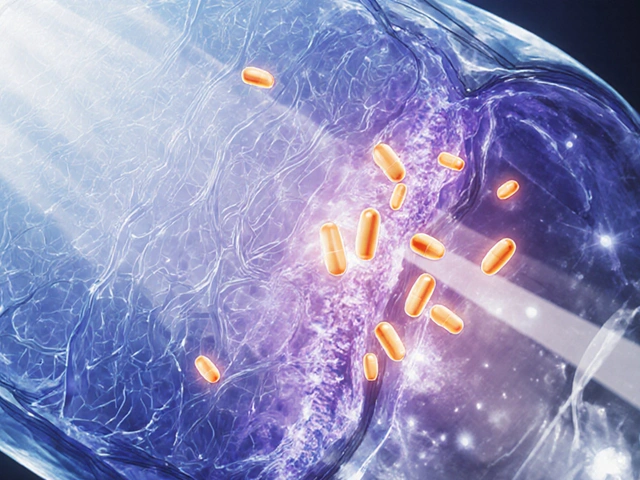
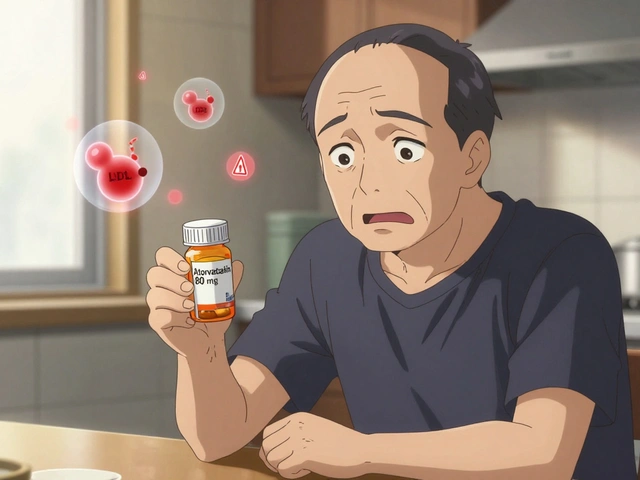
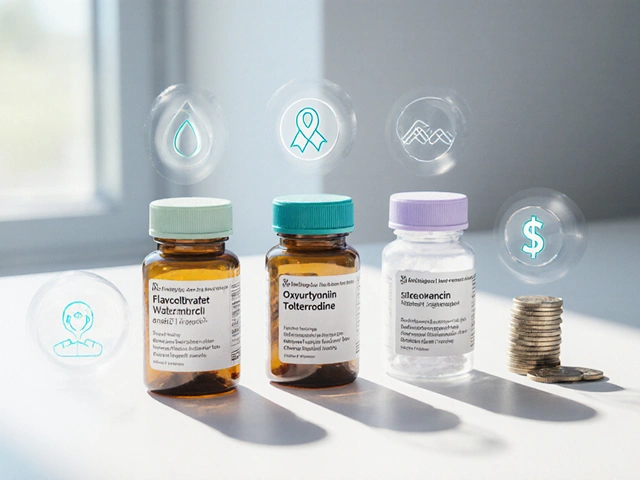


14 Comments
Erika Ponce October 8, 2025 AT 19:15
Good stuff, hope it helps folks get some sleep.
Danny de Zayas October 11, 2025 AT 02:48
I’ve seen patients struggle with night after surgery, especially when the pain meds wear off. Simple changes like keeping the room dark and limiting screens can make a big difference. Light therapy in the morning helps reset your internal clock. Pair that with a short breathing exercise before bed and you’ll notice improvement.
John Vallee October 13, 2025 AT 10:22
First of all, congratulations on tackling a topic that hits many recovering patients hard.
Post‑operative insomnia is not just a nuisance; it can slow wound healing and affect overall morale.
When pain spikes during the night, the body remains in a heightened stress state, releasing cortisol that further delays sleep onset.
Addressing pain with a multimodal regimen-acetaminophen, NSAIDs, and low‑dose opioids only when necessary-creates a more stable platform for rest.
Equally important is the timing of medication; avoid doses that cause vivid dreams or nocturnal awakenings.
Sleep hygiene, though it sounds cliché, remains the cornerstone: cool bedroom temperature, blackout curtains, and a consistent bedtime schedule.
Modern research shows that exposure to bright light for 20‑30 minutes within an hour of waking can realign circadian rhythms disrupted by hospital lighting.
Conversely, limiting blue‑light exposure after sunset, perhaps with amber glasses, reduces melatonin suppression.
Incorporating a simple 4‑7‑8 breathing pattern-inhale four seconds, hold seven, exhale eight-activates the parasympathetic nervous system and calms racing thoughts.
For those who find it hard to unwind, a brief session of guided meditation or a mindfulness app can bridge the gap between pain relief and sleep readiness.
Melatonin supplementation, taken 30 minutes before bed at a modest 3 mg dose, has been shown to shorten sleep latency without significant interaction with most anesthetic agents.
However, it should not replace proper analgesia; think of it as a gentle nudge rather than a sedative punch.
If insomnia persists beyond five days despite these measures, consider Cognitive Behavioral Therapy for Insomnia (CBT‑I), which restructures maladaptive thoughts around sleep.
A single remote CBT‑I session within 48 hours of surgery can teach stimulus control, limiting the bed to sleep and intimacy only.
Finally, maintain open communication with your surgical team-reporting ongoing pain or side‑effects ensures timely adjustments and prevents a vicious cycle of sleeplessness.
In summary, a blend of pain management, circadian alignment, breathing techniques, and, when needed, professional behavioral therapy offers the most robust strategy for conquering post‑operative insomnia.
Rose K. Young October 15, 2025 AT 17:55
This guide pretty much re‑states what any nurse would say, nothing groundbreaking. If you’re still sleepless, maybe the surgery was a mistake.
Christy Pogue October 18, 2025 AT 01:28
Wow, this is a fantastic rundown! I love how it mixes science with easy‑to‑follow tips. The light therapy section especially resonates-my roommate swears by morning sunshine. Keep sharing these gems, they really empower patients.
Helena Pearson October 20, 2025 AT 09:02
🌟 Absolutely, the blend of evidence‑based advice and practical steps feels like a warm hug for the anxious mind. 🎈 Adding a splash of lavender scent can also soothe the nervous system, a tiny but effective touch. 🌙 Remember, consistency is key; the brain learns habits over time. 💪 Your optimism fuels others to try these strategies, and that ripple effect is priceless. 😊
Patricia Fallbeck October 22, 2025 AT 16:35
Really? All that “light therapy” hype feels like a marketing gimmick. I’d argue that a solid cup of chamomile tea and a sturdy pillow beat any fancy LED panel. 🤔
Brett Snyder October 25, 2025 AT 00:08
These suggestions are fine, but they ignore cultural sleep patterns that vary worldwide. Not everyone can get morning sunlight.
Nidhi Jaiswal October 27, 2025 AT 07:42
While respecting cultural differences, the physiological mechanisms of circadian rhythms remain universal. Adjusting timing-perhaps using indoor bright lights-can replicate sunrise exposure when outdoors isn’t feasible. It’s about flexibility, not dismissal.
Sunil Sharma October 29, 2025 AT 15:15
Thanks for the comprehensive guide. I especially appreciate the clear table comparing non‑pharmacological and pharmacological options. It makes decision‑making less intimidating for patients and caregivers alike. The FAQ section answered many lingering doubts I had.
Leah Robinson October 31, 2025 AT 22:48
👍 Totally agree, the table is a lifesaver! 🎉 Also, reminding folks to limit caffeine after noon can prevent that sneaky sleep delay. 🌞 Stay motivated, everyone!
Abhimanyu Lala November 3, 2025 AT 06:22
Enough with the fluff-real recovery needs hard data, not feel‑good fluff.
Richard Sucgang November 5, 2025 AT 13:55
One must question the superficiality of such posts; they gloss over the complex neurobiology in favor of pop‑psych buzzwords. A more rigorous citation list would elevate the discourse considerably.
Russell Martin November 7, 2025 AT 21:28
Good point-adding primary study references would strengthen credibility. Meanwhile, the practical steps listed still offer immediate benefit for many patients.